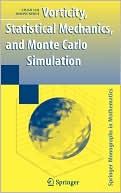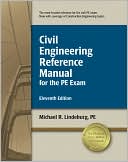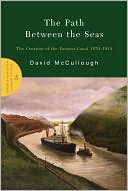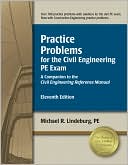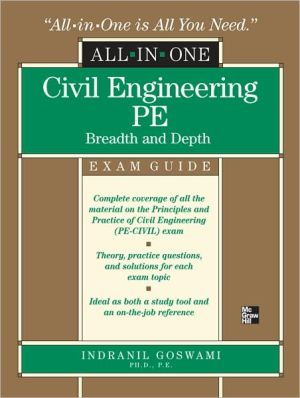Vorticity, Statistical Mechanics, and Monte Carlo Simulation
Search in google:
This book is drawn from across many active fields of mathematics and physics, and has connections to atmospheric dynamics, spherical codes, graph theory, constrained optimization problems, Markov Chains, and Monte Carlo methods. It addresses how to access interesting, original, and publishable research in statistical modeling of large-scale flows and several related fields. The authors f this book explicitly reach around the major branches of mathematics and physics, showing how the use of a few straightforward approaches can create a cornucopia of intriguing questions and the tools to answer them. In reading this book, the reader will learn how to research a topic and how to understand statistical mechanics treatments of fluid dynamics. Of particular interest should be the application of Monte Carlo methods to problems like dispersal of points on the sphere, the phase transitions of in viscid fluid flows in models that increasingly approach the conditions of actual planetary atmospheres, and the treatment of negative absolute temperatures and the effects these extremely high-energy states have on fluid flows. Special attention is given to spherical models as well.This book is intended for the upper-level undergraduate or the beginning graduate level courses of mathematics and physics. It will also be of interest to readers interested in statistical mechanics methods applied to fluid mechanics problems. Readers will gain an understanding of how to synthesize new mathematics by applying familiar tools in new ways, and develop new tools to fit particular applications.
Introduction 1Statistical Mechanics and Vortex Problems 1Euler's Equation for Inviscid Fluid Flow 4Probability 9Introduction 9Basic Notions 9Random Variables and Distribution Functions 10Expectation Values and Averages 12Variance 15Multiple Variables and Independence 17Limiting Theorems 19Bayesian Probability 25Remarks 26Statistical Mechanics 29Introduction 29Ensembles 29Partition Functions 30Constraints and Chemical Potentials 32Partition Functions by Lagrange Multipliers 34Microstate and Macrostates 35Expectation Values 38Thermodynamics from Z 39Fluctuations 42Applications 44The Monte Carlo Approach 51Introduction 51Microstates and Macrostates 51Markov Chains 53Detailed Balance 55The Metropolis Rule 55MultipleCanonical Constraints 57Ensemble Averages 58Random Number Generation 62Linear Congruence Generators 62Multiple Recursive and Fibonacci Generators 63Add-with-Carry and Subtract-with-Carry Generators 63Inverse Congruential Generators 64Combined Generators 65Spectral Methods 67Introduction 67Inner Products 67Basis Functions 70Minimizers 72Fourier transforms 73Spherical Harmonics 77Discrete Models in Fluids 79Introduction 79Euler's Equations for Fluid Flows 80N-body Hamiltonians 83Symplectic Variables 86Coordinates and Stereographic Projection 89Dynamics on the Plane 91Dynamics on the Sphere 103Remarks 113Spin-Lattice Models 115Introduction 115Spin-lattice Models 116The Lattice Model 117Point Strength 118Normalized Strength 121Negative Temperatures 124Phase Transitions 125Energy-Enstrophy-Circulation Model 127Solution of the Spherical Ising Model for [Characters not reproducible] = 0 128Monte Carlo Simulations 133Introduction 133Correlation Functions 137The Mean Nearest Neighbor Parity 140Distances 157Remarks 159Polyhedra and Ground States 161Introduction 161Face-Splitting Operations 162Centroid Splitting 163Geodesic Splitting 164Noncommutivity 165Polyhedral Families 168Polyhedral Families Versus Vortex Gas 169Pairwise Interaction Energies 170Energy of Split Faces 173Tetrahedron Splittings 174130 Vortices 176Octahedron Splittings 178258 Vortices 180Icosahedron Splittings 182642 Vortices 184Mesh Generation 187Introduction 187The Vortex Gas on the Sphere 188Radial Distribution Function 190Vortex Gas Results 192Rigid Bodies 206Spherical Codes 209Statistical Mechanics for a Vortex Gas 213Introduction 213The Vortex Gas on the Plane 214Trapped Slender Vortex Filaments 219The Discretized Model 222Extremizing E 224Variational Problem on the Radius 226Two-Layer Quasi-Geostrophic Models 233Introduction 233Two-Layer Quasi-Geostrophic Models 233Governing Equations 234Numerical Models 240Numerical Vortex Statistics 241A Coupled Barotropic Flow - Rotating Solid Sphere System 245Introduction 245The Coupled Barotropic Vorticity - Rotating Sphere System 246Physical Quantities of the Coupled Flow - Rotating Sphere Model 247Variational Results 249Energy-Enstrophy Theory for Barotropic Flows 250Non-Rotating Extremals 251Rotating Sphere 253Statistical Mechanics 254Derivation of Spin-Lattice Hamiltonians 254Gaussian Energy-Enstrophy Model 255Spherical Model 256Monte Carlo Simulations of the Spherical Model 257The Vector Spherical Model for Barotropic Statistics 257Remarks 260References 263Index 283
